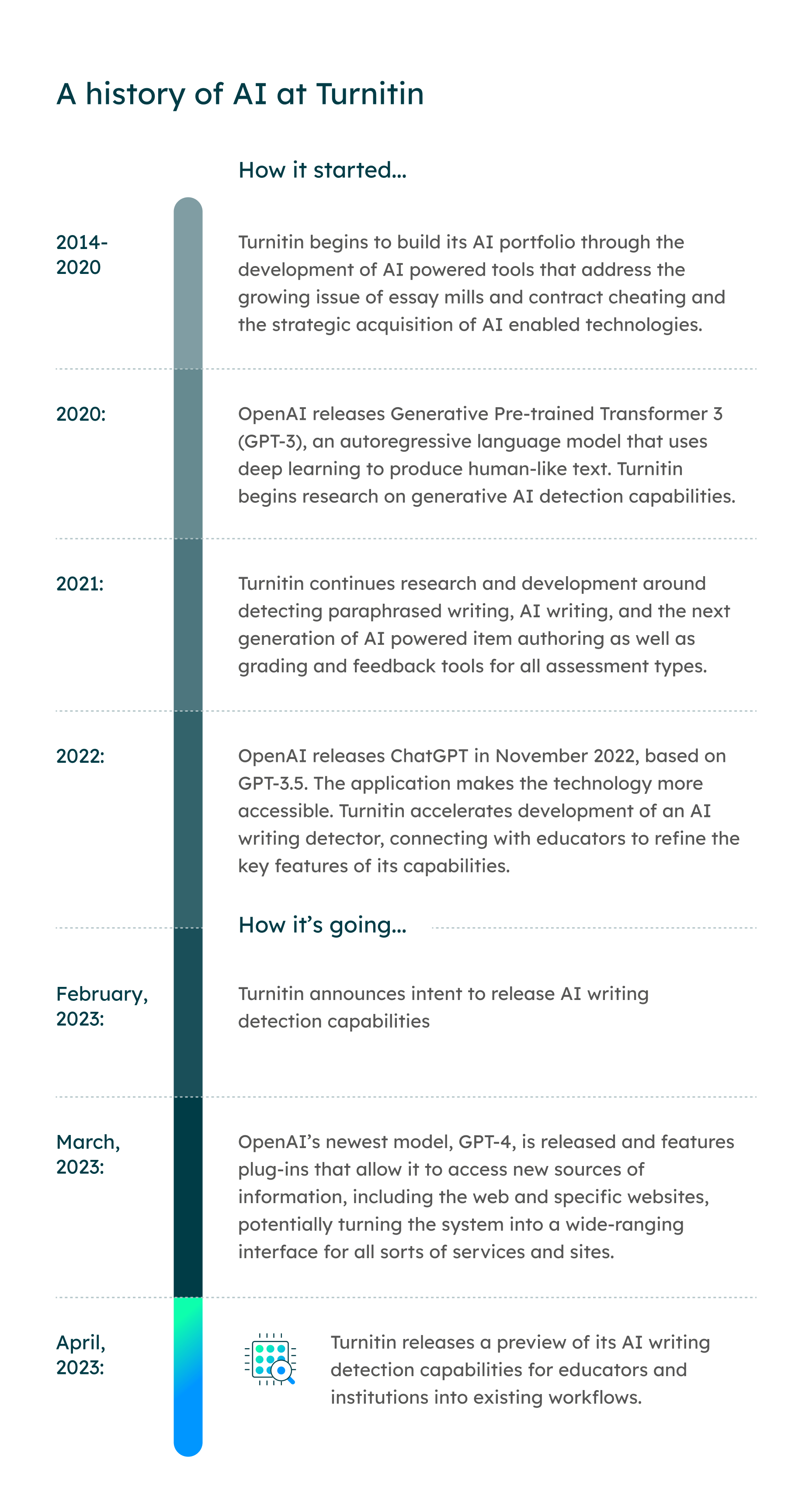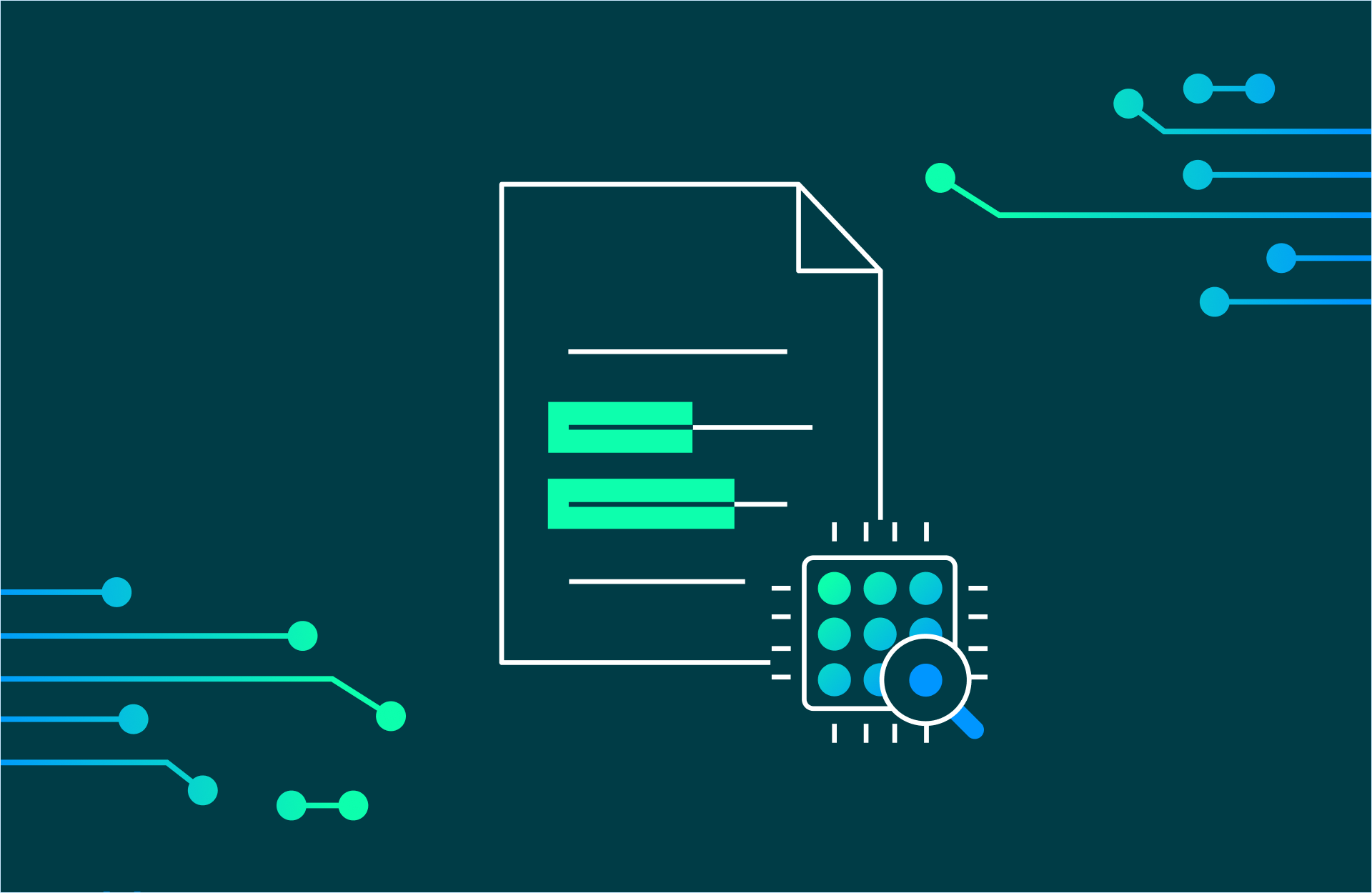It is hard to imagine that ChatGPT launched a few months ago, and Google Bard just a few short weeks. Yet, it was only this past November that the AI writing tool began its viral ascent within the education community and beyond. The technology behind ChatGPT, Google Bard, and other AI writing tools did not come as a surprise, given the dedicated research and development of the Turnitin AI team over the last few years. However, we were all impressed with the progress and promise that GPT-3.5 showed over GPT-3.
Knowing that these advances only made our efforts more critical, we accelerated the development of our AI writing detection capabilities, communicating with educators at every step to ensure their needs were heard and met.
Today, we are pleased to announce the launch of our AI writing detection capabilities in Turnitin Feedback Studio (TFS), TFS with Originality, Turnitin Originality, Turnitin Similarity, Simcheck, Originality Check, and Originality Check+. The detector will support over 2.1 million educators and more than 10,700 institutions, reaching more than 62 million students. It is a milestone that represents an incredible commitment from the Turnitin team as well as our customers.
The work is not done. New AI writing tools are coming out regularly with claims and aspirations of being undetectable. To date, the statistical signature of AI writing tools remains detectable and consistently average. In fact, we are able to detect the presence of AI writing with confidence. We have been very careful to adjust our detection capabilities to minimize false positives and create a safe environment to evaluate student writing for the presence of AI-generated text.
The technology is constantly evolving and just a few weeks ago, OpenAI announced the release of GPT-4 with broader access to the web and third-party sites. We will continue to adapt and respond to the next iterations and innovations in AI writing, putting the safety of students and the needs of educators and institutions first.
We invite you to continue following our progress and participating in the process through our AI writing educator resources page.





